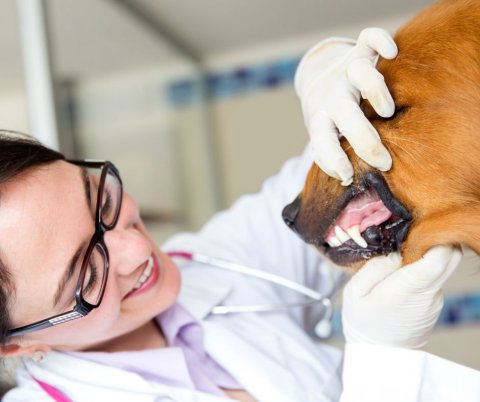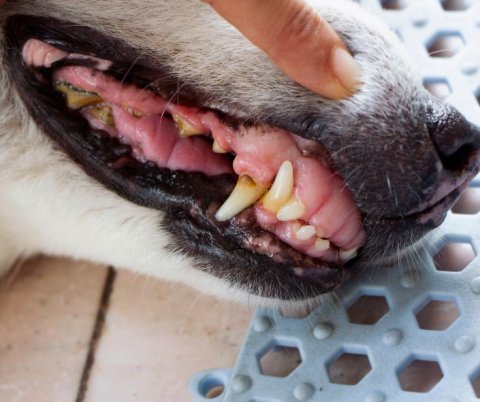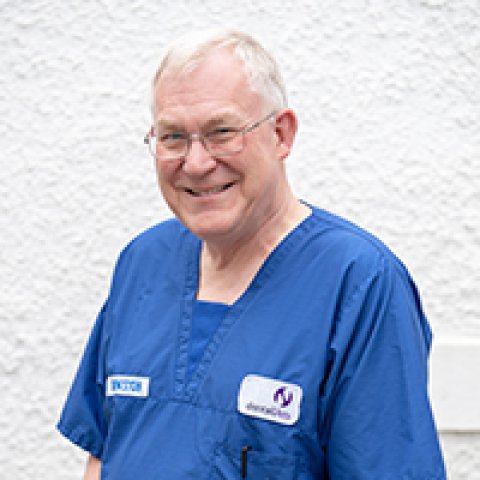Norman Johnston is a senior specialist and consultant in animal health dental care. We asked him to share his experiences and discuss some of the key challenges in dental disease in dogs.
Dentistry. It’s the big paradox in small animal practice. Everyone knows it’s necessary, but few people like to do it. Statistics abound in literature about the prevalence of 90% of the dog population over three years old having dental disease. Dental disease in this context means periodontal disease but the reality is dirty teeth covered in calculus and plaque, inflamed and infected soft tissues and, more important and obvious to the owners, halitosis.
What is the paradox? It’s the most common non-seasonal condition of dogs that markedly affects their general health in life. All this potential surgery walks in and out of your waiting room every day and represents a solid income stream that should be embraced as a financial lifeline. Instead, it’s often given lowly status with routine dentistry allocated to the least experienced members of veterinary staff and nurses working with poor quality, possibly blunt, instruments in the corner of the prep room.

It seems odd that many practices seem reluctant to embrace dentistry. Training at veterinary school still seems quite hit and miss, as is exposure to the discipline during EMS. Over my four decades as an educator, I found that the skills that most vets want to equip themselves with is a solid grounding in the recognition of dental diseases plus the basics of scaling, polishing, dental radiography and, possibly, surgical tooth extraction. Anything beyond that can be referred.
If a practice is big enough, it’s a good idea to create a “dental department” with an interested vet or two plus nursing support. The CPD budget can be channelled more effectively to staff who are receptive and want to improve both skills and knowledge. Equipment maintenance is more effective this way too. These instruments don’t sharpen themselves!
Too often when a dog is found with moderate calculus cover and gingivitis during a routine exam any thought of intervention is pushed down the line until the next examination.
There are two vital components to routine dentistry. What the practice does is the surgical aspect. It’s reactive and treatment. Scaling, polishing, extractions, and the like. What the owner does at home is the other side of the equation. It’s preventive. Very simply, the more diligent the owner is, the less often the practice has to intervene. It’s the role of the practice to pass this message on vigorously and continuously.
Too often when a dog is found with moderate calculus cover and gingivitis during a routine exam any thought of intervention is pushed down the line until the next examination. That might be a year away at best. So what improvement will take place in the meantime? The calculus won’t go away, and neither will the inflammation and how often is inflammation of a soft tissue normal? A simple scale and polish at a relatively low cost now becomes a longer, more involved procedure down the line, quite possibly involving surgical extractions.

Plaque is the principal enemy. This is the invisible film of food debris and bacteria that covers the teeth every day. If it’s not removed daily the bacterial content changes quite quickly from healthy oral commensals, mostly gram-positive, to pathogens that are mostly gram-negative.
Plaque also becomes mineralised over time to form calculus (or tartar). A toothbrush or other mechanical means, such as a chew, will work on immature plaque but only instruments can remove calculus.
The very same principles apply to human oral health. If you don’t brush and floss properly the dentist has much more to do.
With support from the practice staff, most owners can manage to brush their dog’s teeth. Proper support means repeated reviews to ask if they are managing and, if not, what can we do to help. The use of disclosing solution is a useful tool in oral examination. It costs next to nothing to wipe this red or purple dye along the buccal surfaces of the teeth and show the owners where the plaque is. No colour means no plaque. The deeper the colour the thicker the layer of plaque and the more mature (mineralised) it is.
In some dogs, the teeth on their left side have low levels of plaque contrasting with the right-side teeth, which show markedly heavier colouration. This is common for right-handed owners who find brushing the dog’s left side much less awkward than the right. The solution is to start on the awkward side first while pet cooperation is at its best.
It can be surprising how many owners will follow this line diligently once they are properly supported and aware that how often their pet has to undergo an anaesthetic for a scale and polish is directly within their control. And for the record, dentistry in dogs and cats without anaesthetic is neither legal nor effective.
For owners who won’t, can’t, or brush intermittently, the solution can be dental chews. A paper from 1996 showed that every other day toothbrushing did not maintain healthy gingiva. The authors found that a daily dental chew in these circumstances reduced the gingival inflammation scores and the accumulated dental deposits. They concluded that daily toothbrushing be recommended but providing a daily dental chew gives added health benefits when brushing is less frequent than daily and provides a useful adjunct for the owner.
Are all chews the same? Quality chews should be of the appropriate size for the breed and have a shape that encourages mastication in the carnassial region. In addition, the chemical composition should be both plaque and calculus retardant. Finally, if used daily, the calorie content should be included in the daily ration and other food in the ration reduced if necessary.

Norman Johnston BVM&S DipAVDC DipEVDC FRCVS
Norman Johnston is a past president and board member of the European Veterinary Dental College and served two terms as president of the British Veterinary Dental Association from 1991 to 1995. In 1997, he received the Simon Award from the British Small Animal Veterinary Association for outstanding contributions in the field of veterinary surgery.

